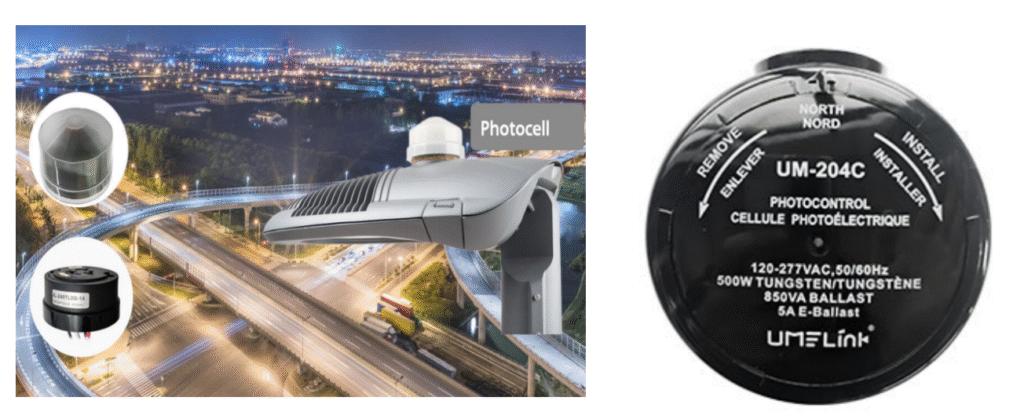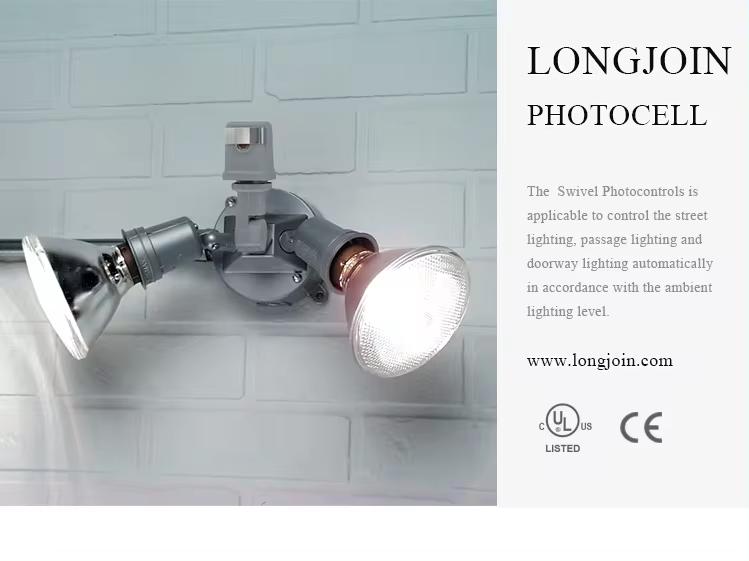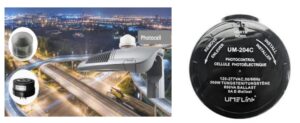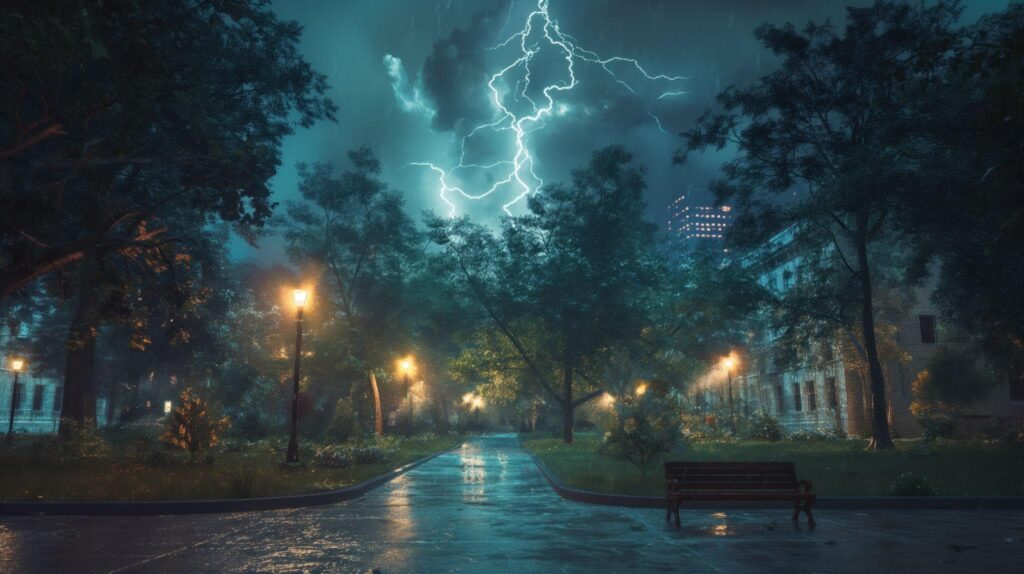Schema
- Introduzione
- Perché confrontare Prese fotocontrollate e sensori di movimento per l'illuminazione esterna nel 2025?
- Come fare Interruttori fotocellule Controllare automaticamente l'illuminazione esterna?
- In che modo i sensori di movimento rilevano e attivano le luci in modo efficiente?
- Quali sono le principali differenze tra fotocellule e sensori di movimento?
- In quali scenari dovresti utilizzare fotocellule o sensori di movimento?
- Puoi combinare Fotocontrollori e sensori di movimento per un'illuminazione più intelligente?
- Quali soluzioni di illuminazione intelligente offre Long-Join per il 2025?
- Parole finali

Fotocellule e sensori di movimento sono attualmente i sistemi più utilizzati per l'illuminazione intelligente. Entrambi contribuiscono al risparmio energetico, ma funzionano in modi diversi.
Fotocontrollori I sensori di movimento reagiscono alla luce naturale e ai movimenti. Per scegliere quello giusto, è necessario valutare attentamente dove e come utilizzarlo.
Questa guida analizza singolarmente ciascuna di queste opzioni. Che tu stia progettando l'illuminazione stradale o mettendo in sicurezza un magazzino, questo confronto ti aiuterà a decidere.
Perché confrontare Prese fotocontrollate e sensori di movimento per l'illuminazione esterna nel 2025?
Sensore fotografico vs sensore di movimento
Questo dispositivo fotosensibile accende automaticamente le luci al tramonto e le spegne all'alba, reagendo esclusivamente ai livelli di luce ambientale.
Un sensore di movimento rileva il movimento. Può utilizzare la tecnologia a infrarossi passivi o a microonde. Le luci si attivano solo in presenza di movimento.
Perché questo dibattito è importante?
Aumento dei costi energetici
L'illuminazione a LED è più economica, ma i prezzi dell'energia elettrica stanno aumentando. I controlli intelligenti riducono gli sprechi. Città e aziende devono ridurre le spese operative ora, piuttosto che in futuro.
Le esigenze della città intelligente
Le amministrazioni urbane di tutto il mondo necessitano ora di un'illuminazione che si adatti alle condizioni del traffico e della luce diurna. I sistemi devono supportare l'IoT, la regolazione remota dell'intensità luminosa e il controllo basato sui dati.
Esigenze di sicurezza in evoluzione
Gli standard di sicurezza pubblica ora favoriscono un'illuminazione che risponda in tempo reale alla presenza di pedoni o veicoli, creando percorsi pedonali e parcheggi più sicuri.
Perché confrontarli direttamente?
Perché ogni tecnologia offre punti di forza diversi:
- Controllori di illuminazione offrono un controllo semplice e passivo che riduce l'inquinamento luminoso.
- I sensori di movimento consentono un utilizzo a raffica, attivandosi solo quando necessario, riducendo il consumo energetico inattivo e migliorando la sicurezza mirata.
Inoltre, molti paesi impongono ora standard minimi di prestazione energetica. Ciò richiede una rapida transizione ai sistemi LED entro il 2025. Governi e aziende puntano a ridurre le emissioni di carbonio su larga scala. L'illuminazione intelligente contribuisce a ridurre le emissioni, soddisfacendo al contempo i requisiti di... obiettivi ESG.
Come fare Interruttori fotocellule Controllare automaticamente l'illuminazione esterna?

Regolatori di illuminazione stradale Utilizza fotoresistenze per gestire l'illuminazione. Quando la luce ambientale scende al di sotto di una soglia preimpostata, il circuito si chiude. Le luci si accendono automaticamente. All'alba, l'aumento della luce apre il circuito e le luci si spengono. Questo garantisce che l'illuminazione si allinei esattamente con i cicli di luce naturale.
Casi d'uso ideali
Interruttori con sensore di luce Sono adatti per applicazioni di illuminazione che non richiedono trigger basati sul movimento. Gli ambienti ideali includono:
- Lampioni lungo le strade urbane e le autostrade
- Illuminazione dei percorsi nei parchi e nei campus
- Ampi parcheggi e perimetri di sicurezza esterni
Vantaggi principali
● Efficienza energetica
Le luci funzionano solo durante le ore di buio, evitando sprechi energetici durante il giorno. I rendimenti possono essere ulteriormente incrementati combinandole con apparecchi a LED.
● Manutenzione minima richiesta
Una volta installate, le fotocellule funzionano automaticamente, senza programmazione o controllo remoto. Nessuna programmazione, nessuna operazione.
● Controllo passivo e affidabile
Nessuna parte mobile. La commutazione basata esclusivamente sulla luce riduce il rischio di guasti. Le prestazioni rimangono stabili durante tutte le stagioni.
● Supporta gli obiettivi di sostenibilità
L'interruzione automatica del consumo energetico durante il giorno contribuisce a soddisfare gli obiettivi normativi ed ESG. Riduce l'impronta di carbonio dell'illuminazione urbana.
In che modo i sensori di movimento rilevano e attivano le luci in modo efficiente?
I sensori di movimento offrono notevoli vantaggi laddove è necessaria un'illuminazione intermittente ma precisa. Forniscono luce esattamente quando serve, in modo efficiente e intelligente. Comunemente, utilizzano una o più delle tecnologie illustrate di seguito per rilevare l'attività all'esterno.
● Infrarossi passivi
I sensori PIR misurano le variazioni della radiazione infrarossa emessa da corpi caldi, come le persone, rispetto allo sfondo più freddo. Attivano la luce quando una fonte di calore in movimento attraversa il loro campo visivo.
● Forno a microonde
Emettono onde elettromagnetiche e ascoltano gli effetti Doppler nella riflessione. Possono rilevare il movimento attraverso oggetti non metallici, pareti o vetro.
● Doppia tecnologia
Questi prodotti combinano sia il PIR che la microonde. Entrambi i sensori devono scattare per attivarsi, riducendo significativamente i falsi allarmi.
Dove funzionano meglio i sensori di movimento
Gli ambienti ideali sfruttano al meglio la loro attivazione mirata. Ecco alcuni spazi in cui sono più adatti.
- Vicoli
- Ingressi posteriori
- Perimetri degli edifici
- Zone di carico del magazzino
Si tratta in genere di aree con traffico pedonale o veicolare intermittente, in cui l'illuminazione proattiva aumenta la sicurezza senza sprecare energia.
Benefici
- L'attivazione in tempo reale garantisce l'accensione delle luci in pochi istanti, in base al movimento. Si spengono dopo un ritardo preimpostato, riducendo al minimo il consumo energetico.
- L'illuminazione improvvisa scoraggia gli intrusi e allerta gli osservatori nelle vicinanze. L'integrazione con allarmi o telecamere può abilitare avvisi immediati.
- Poiché le luci rimangono spente a meno che non siano necessarie, si risparmia energia durante le lunghe ore notturne. Gli studi dimostrano una riduzione del consumo di elettricità fino a 40% nelle aree urbane intelligenti.
- I sensori PIR consumano una potenza minima (spesso inferiore a 1 W), mentre i sensori a microonde ne consumano leggermente di più. Le unità basate su PIR sono particolarmente adatte per installazioni alimentate a energia solare o a batteria.
Quali sono le principali differenze tra fotocellule e sensori di movimento?
| Caratteristica | Fotocellula (dal tramonto all'alba) | Sensore di movimento (PIR/microonde) |
| Meccanismo di attivazione | Rilevamento della luce ambientale | Rilevamento del movimento |
| Tempo di attivazione | Dal tramonto all'alba | Solo quando viene percepito il movimento |
| Profilo energetico | Moderato (uso prolungato) | Molto basso (uso intermittente) |
| Costo di installazione | Semplice ed economico | Leggermente più alto, più cablaggio |
| Zone ideali | Illuminazione pubblica, strade | Ingressi, corridoi, vicoli |
In quali scenari dovresti utilizzare fotocellule o sensori di movimento?
| Area di applicazione | Tipo di sensore consigliato | Obiettivo principale | Metodo di attivazione tipico |
| Strade urbane | Fotocellula | Risparmio energetico | Rilevamento della luce ambientale |
| Cortili residenziali | Sensore di movimento | Sicurezza e automazione | Movimento entro il raggio di rilevamento |
| Parchi e sentieri | Ibrido | Sicurezza ed efficienza | Logica combinata luce + movimento |
| Parcheggi remoti | Sensore di movimento | Illuminazione mirata | Attivato dal movimento del veicolo |
Illuminazione stradale
Sensori fotocellula luminosi Sono più consigliati in questo caso. Sono più efficaci quando è necessaria un'illuminazione costante per tutta la notte. Sono i più convenienti per una copertura di lunga durata con un intervento umano minimo.
Illuminazione di sicurezza
I sensori di movimento sono la soluzione ideale: attivano la luce solo quando viene rilevato un movimento. La loro attivazione mirata migliora la sicurezza riducendo al minimo il consumo di energia inutilizzata.
Città intelligenti
I sistemi ibridi combinano l'illuminazione di base con fotocellule con un booster attivato dal movimento. Questi sistemi adattivi si attenuano in assenza di attività e aumentano la luminosità su richiesta. Grandi progetti pilota in Europa e Nord America mostrano risparmi energetici fino a 60-851 TP3T rispetto ai sistemi di illuminazione statici.

Condizioni meteorologiche estreme
In tali ambienti, le fotocellule potrebbero attivarsi per lunghe ore senza alcun beneficio. Allo stesso tempo, i sensori di movimento potrebbero non rilevare movimenti lenti o statici in aree estese. In tali condizioni, un posizionamento o una suddivisione in zone accurata dei sensori, o persino una programmazione di riserva, garantiscono l'affidabilità senza un consumo energetico eccessivo.
Puoi combinare Fotocontrollori e sensori di movimento per un'illuminazione più intelligente?
I sistemi di illuminazione ibridi utilizzano il controllo tramite fotocellula come elemento portante dell'illuminazione dal tramonto all'alba. Un sensore di movimento aumenta la luminosità solo quando viene rilevato un movimento. La luce rimane fioca di notte, ma passa alla massima potenza in caso di movimento, per poi tornare alla potenza di base dopo un ritardo preimpostato.
Questo sistema bilancia sicurezza e risparmio. Progetti pilota per città intelligenti in tutta Europa. Sheffield e Oslo segnalare 20–45% risparmi energetici.
Vantaggi principali
- Minor consumo energetico grazie alla gestione intelligente dell'illuminazione.
- Visibilità e sicurezza migliorate perché la luminosità attivata dal movimento riduce le zone d'ombra.
- Maggiore affidabilità: le fotocellule evitano di perdere l'illuminazione notturna; il movimento impedisce un utilizzo eccessivo e non necessario.
- Ideale per l'implementazione in città intelligenti: supporta la suddivisione in zone, l'oscuramento e il controllo remoto.
| Caratteristica | Solo fotocellula | Solo sensore di movimento | Configurazione ibrida (entrambi) |
| Efficienza energetica | Alto | Moderare | Molto alto |
| Adattabilità in tempo reale | Basso | Alto | Molto alto |
| Installazione iniziale | Facile | Facile | Moderare |
| Ideale per traffico intenso | SÌ | SÌ | SÌ |
| Sicurezza notturna | Bene | Alto | Eccellente |
Quali soluzioni di illuminazione intelligente offre Long-Join per il 2025?
Long-Join offre controlli di illuminazione robusti e a prova di futuro, pensati appositamente per città intelligenti, comuni, integratori e OEM.
JL‑203C e JL‑243C
Si tratta di fotocomandi con blocco a torsione, adatti all'illuminazione crepuscolare e all'alba, conformi allo standard ANSI C136.41. JL‑243C include uno scaricatore di sovratensione integrato (≈ 40 kA / 640 J) e compensazione del decadimento dei LED per una maggiore affidabilità.
La serie supporta ingressi multitensione (90–305 VAC), IP65 (IP67 opzionale), con controllo a microprocessore, sensori filtrati a infrarossi e armatura metallica opzionale per una maggiore durata.
Design compatibili con sensori di movimento e modulari
Long-Join offre fotocontrollori della serie JL-7xx che supportano il rilevamento della luce e il rilevamento a microonde o PIR.
Questi moduli offrono la regolazione automatica della luminosità e la possibilità di gestione remota per un utilizzo flessibile in diversi ambienti esterni.
Pronto per l'IoT
Long-Join è un membro del consorzio Zhaga e produce controller conformi agli standard Zhaga Book 18. Il loro Zhaga-I moduli certificati D4i consentono la compatibilità plug-and-play e percorsi di aggiornamento a prova di futuro negli ecosistemi di illuminazione delle città intelligenti.
Inoltre, i prodotti supportano anche protocolli di comunicazione come DALI2.0 (D4i), 0-10 V, Bluetooth mesh e protocolli wireless: NB‑IoT, LoRa, E Zigbee.
Progettato per B2B
Le soluzioni Long-Join sono pensate per implementazioni su larga scala, in particolare per reti di illuminazione stradale e reti di servizi pubblici nelle smart city. Ecco un elenco delle certificazioni internazionali che ne attestano la conformità.
Parole finali
L'illuminazione intelligente richiede la scelta del sensore giusto per la giusta applicazione. La combinazione di fotocellule e sensori di movimento può offrire prestazioni superiori e risparmi energetici. Chi-Swear fornisce fotocellule intelligenti Long-Join affidabili, progettate per i moderni sistemi per esterni. Scopri le loro soluzioni per aggiornare la tua infrastruttura di illuminazione in tutta sicurezza.






